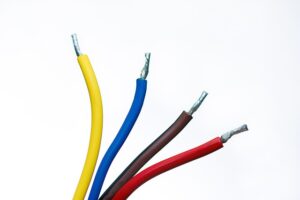Electrical systems rely on various components to ensure safe and efficient operation. Two critical elements in these systems are the neutral and earth (ground).
Understanding the implications of neutral and earth coming into contact is essential for maintaining electrical safety. When neutral and earth wires touch, it can lead to electrical faults, safety hazards, and potential damage to equipment.
This article explores the potential consequences and provides insights into protective measures that can be implemented.
Understanding Neutral and Earth
Definition of Neutral: In electrical systems, the neutral wire serves as a return path for current, completing the circuit. It typically carries the same voltage as the live or hot wire but with an opposite phase.
Definition of Earth (Ground):The earth, or ground, is a conductive connection to the earth’s surface that provides a path for the dissipation of electrical energy. It is essential for safety, as it helps prevent electric shocks and allows the safe functioning of electrical systems.
Role of Neutral and Earth in Electrical Systems:The neutral wire ensures the proper distribution of electrical current, while the earth wire protects against faults by providing a low-resistance path for current to flow safely to the ground. These two elements work together to maintain system stability and ensure user safety.
Normal Operation of Neutral and Earth
Separation of Neutral and Earth: In well-designed electrical systems, the neutral and earth wires are electrically isolated and should not come into direct contact under normal operating conditions. This separation is crucial to maintain the integrity of the electrical system.
Functions of Neutral and Earth in Electrical Systems: The neutral wire carries the returning current from electrical devices, preventing imbalances and ensuring the safety of electrical equipment. The earth wire, on the other hand, acts as a protective measure against electrical faults, such as short circuits and ground faults, by providing a safe discharge path for excess current.
Consequences of Neutral and Earth Touching
Short Circuit
Definition and Causes of Short Circuit: A short circuit occurs when the neutral and earth wires come into direct contact, creating a low-resistance path. This can happen due to faulty wiring, insulation failure, or equipment malfunction.
Effects of Neutral and Earth Touching in a Short Circuit: When the neutral and earth wires touch during a short circuit, excessive current flows through the system, leading to electrical malfunctions, equipment damage, and potential safety hazards such as electrical fires and electric shocks.
Read also my article: The Shocking Truth: Connecting Live to Neutral.
Electrical Faults and Malfunctions
Impact of Neutral and Earth Touching on Electrical Faults: When the neutral and earth wires touch, electrical faults can occur more frequently. This contact can cause improper voltage distribution, erratic device behavior, and equipment failure.
Common Types of Electrical Faults Caused by Neutral and Earth Touching: Neutral and earth touching can result in various electrical faults, including ground faults, insulation breakdown, voltage fluctuations, and unexpected current surges. These faults can disrupt the normal operation of electrical devices and pose risks to both the system and individuals.
Safety Hazards
Electric Shock
Potential Risks of Neutral and Earth Touching: When neutral and earth wires touch, the risk of electric shock increases. If a person comes into contact with an energized conductive surface, such as a metal appliance or equipment casing, they can experience a dangerous electric shock.
Measures to Prevent Electric Shock: To mitigate the risk of electric shock, it is crucial to ensure proper grounding, install ground fault circuit interrupters (GFCIs), and regularly inspect and maintain electrical systems.
Fire Hazards
How Neutral and Earth Touching Can Cause Fires: When the neutral and earth wires touch, excessive current can flow through unintended paths, generating heat and potentially igniting flammable materials. This can lead to electrical fires with severe consequences.
Fire Prevention Methods: To prevent fires caused by neutral and earth touching, it is essential to use appropriate circuit protection devices, ensure proper insulation, perform regular electrical inspections, and promptly address any wiring or equipment issues.
Protective Measures and Solutions
Ground Fault Circuit Interrupters (GFCIs)
GFCIs are electrical devices designed to detect ground faults and quickly interrupt the circuit, preventing electric shocks. They provide an additional layer of protection in areas where moisture and other potential hazards are present.
Earth Leakage Circuit Breakers (ELCBs)
ELCBs are similar to GFCIs and are primarily used in older electrical systems. They detect small leakage currents and automatically cut off the power supply to prevent electric shocks.
Proper Wiring Practices
Following proper wiring practices, including correctly separating the neutral and earth wires and ensuring effective insulation, is crucial to prevent neutral and earth touching and mitigate associated risks.
Regular Electrical Inspections and Maintenance
Frequent inspections and maintenance help identify and address any potential issues related to neutral and earth-touching. Regular testing and assessments of electrical systems can significantly reduce the risk of accidents and ensure safe operation.
Conclusion
Understanding the consequences of neutral and earth touching in electrical systems is vital for maintaining safety and preventing accidents.
By implementing protective measures such as GFCIs, ELCBs, proper wiring practices, and regular inspections, the risks associated with neutral and earth-touching can be minimized.
Prioritizing electrical safety not only protects individuals but also safeguards property and ensures the reliable operation of electrical systems

